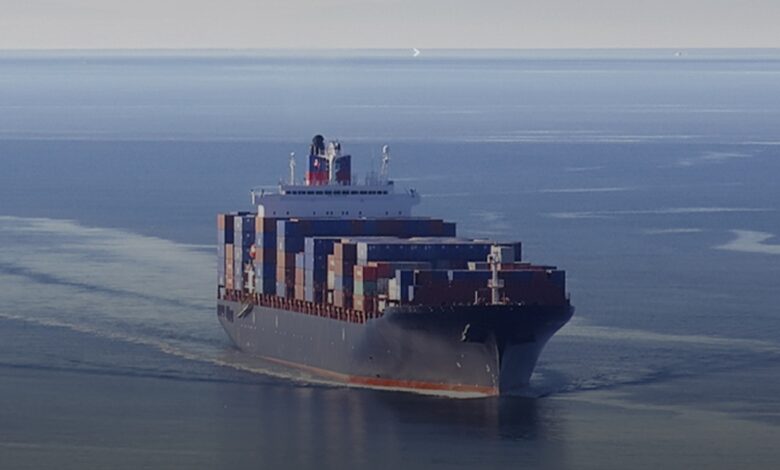Hede Shipping’s Strategic Cut on Transpacific Route
In a move that’s turning heads in the shipping world, China’s Hede Shipping has suspended one of its two transpacific services right before new US port fees linked to China-bound cargo are set to take effect on October 14. This decision marks a clear response to the increasing costs looming over vessels and freight moving between Asia and the US.
Originally running two services across the Pacific, the shipping company has now pulled back on the smaller of these, referred to as the HDS2 service, which operated six ships averaging 2,000 TEU in capacity. That leaves Hede with only its original HDS service still afloat for transpacific trade.
What’s Driving the Change?
New fees introduced by the US Trade Representative will impose additional charges on port calls by China-affiliated ships starting mid-October. However, the final specifics of these fees remain vague, with US Customs & Border Protection still gearing up the system to collect them.
The uncertainty surrounding these policies has many scratching their heads. Some experts suggest the deadline might not be as set in stone as it looks—there’s talk it could be pushed back or even cancelled, as it might be used as a bargaining chip in ongoing US-China trade talks.
The Bigger Picture: Navigating Uncertainty in Global Shipping
This situation isn’t just a blip on the radar for one company; it reflects a wider ripple in global logistik. New port fees and shifting regulations inevitably compel carriers and shippers to rethink their routes and strategies, especially in highly trafficked corridors like the transpacific lane. It’s a classic case of “when the going gets tough, the tough get going”—but sometimes that means scaling back, rerouting, or re-strategizing altogether.
Implications for Freight and Cargo Logistics
- Kostnadshantering: Increased fees mean higher shipping expenses, directly impacting freight rates and overall supply chain costs.
- Optimering av rutt: Companies may seek alternative routes or ports to avoid additional fees, affecting the flow and timing of shipments.
- Capacity Adjustments: Suspension of services reduces available cargo space, potentially leading to tighter capacity and less flexibility for freight forwarders.
- Riskreducering: Cargo operators face increased pressure to manage uncertainties in regulations and fees, requiring agile logistics planning.
How Companies Adapt to Changing Port Policies
In situations like these, freight companies often look for ways to stay nimble. That might involve renegotiating contracts, adjusting schedules, or even exploring multimodal transport solutions—combining sea, rail, and road logistics to keep shipments moving efficiently. The learnings here are especially useful for logistics planners who juggle a tangle of variables daily.
Understanding the Role of Transparency in Shipping Costs
The opaque nature of upcoming US port fees highlights a recurring challenge within the shipping industry: the difficulty in anticipating freight costs and regulatory impacts with precision. When rules are hazy or still being drafted, it leaves freight forwarders, carriers, and shippers in a tight spot trying to forecast expenses and delivery timelines.
Platforms like GetTransport.com prove invaluable here, offering transparent, upfront pricing and a variety of transport options from office moves to bulky freight international shipping. With clear costs on the table, logistics managers can make quicker, smarter decisions without the fear of hidden fees throwing a wrench in their plans.
The Human Side of Cargo and Freight Decisions
No amount of expert analysis can replace firsthand experience when it comes to judging a carrier’s reliability or a shipping route’s efficiency. While reviews and market intelligence provide valuable insights, the real test is how a service performs day-to-day under fluctuating conditions.
GetTransport.com empowers users to book worldwide cargo transport at competitive prices, letting individuals and businesses alike try out services that best meet their needs—whether moving a household, sending bulky items overseas, or managing large freight consignments. This hands-on approach helps avoid costly surprises and unwanted delays.
Reshape Your Cargo Plans with Confidence
The shipping industry is no stranger to twists and turns, especially with evolving port fees and regulations impacting global trade lanes. While the full effect of these increased US port charges may still be up in the air, they serve as a reminder that flexibility and proactive logistics planning are critical.
At the end of the day, whether you’re handling international freight, coordinating a relocation, or dispatching bulky parcels across continents, the ability to adapt quickly is key. Reliable platforms like GetTransport.com make that easier by offering accessible, affordable freight and cargo transport solutions well-suited to today’s dynamic marketplace.
Börja planera din nästa leverans och säkra din last med GetTransport.com.
Sammanfattning
China’s Hede Shipping has chosen to reduce its transpacific service in anticipation of new port fees set to affect China-linked maritime cargo calling at US ports. This decision underscores how tariff changes and regulatory uncertainty ripple across global shipping lanes, influencing freight costs, shipping schedules, and the logistics landscape.
Carriers and shippers must now navigate these choppy waters with vigilance, adjusting strategies to mitigate rising transport expenses and potential capacity constraints. Meanwhile, transparency and flexibility in freight booking, such as those provided by GetTransport.com, become even more crucial, bridging gaps between evolving regulations and the complex needs of cargo movement.
By embracing platforms that offer broad options—from housemoves and office relocations to international haulage of bulky goods—shippers gain powerful tools to streamline operations and stay ahead in an unpredictable market. Ultimately, efficient, reliable, and global logistics solutions are more important than ever for smooth shipping and delivery.

 Hede Shipping Reduces Transpacific Operations Ahead of US Port Fee Increase">
Hede Shipping Reduces Transpacific Operations Ahead of US Port Fee Increase">